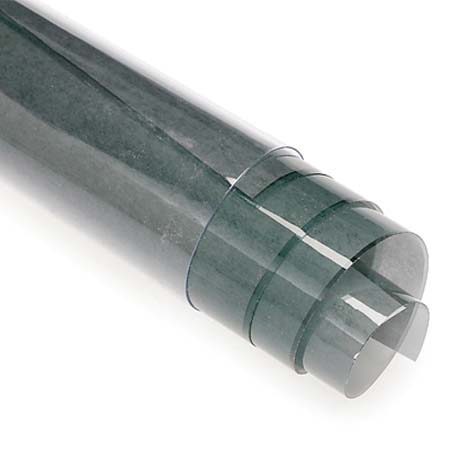
Overview
Compare
Accessories
Protection
Q&A
Questions & Answers
Shopper : which way to insert into holder?GARY L : Doesn't matter as long as you make sure they're all mounted in the same direction. I draw arrows on my mounts so I know which way the gel needs to be mounted. If you're using this with a CPL, I've found that mounting these so that the roll direction is vertical, then the white line on my CPL filters are directly on top of my lens. Makes it easy...DEE GARRETT C : If I remember correctly, there was a piece of paper enclosed that told you which end was the top. It is one of the length sides that is top and bottom. Again if my memory serves me corectly. Hope this helps.DAVE W : Good afternoon,
After cutting the film to the size that we required, it didn't seem that any particular direction that the film was facing made any difference. We placed the film in a glass frame so that it could be seen from both sides. It works just fine holding it one way or another. Hope this helps.
Kind regards,GEORGE M : If you take two pieces of the polarizing gel, lay them on top of each other while looking at a light through them. Rotate one of the gels until they go black with no or almost no light coming through. In this position the polarizers are "crossed", the polarization directions are at 90 degrees to each other. Now turn the one gel again, rotating until the most light comes through. Now the polarizers are polarizing in the same direction. Use a permanent marker to put a line mark at the edge of the film, both going in the same direction. When you mount the gels in a frame of some sort, mark that line on the frame. Then you will always know the direction of the polarization when you use them.ZYGMUND Z : I would notch a corner of the filter before you mount it in your holder(and if you are cutting the filter into multiples make sure it's the same corner on all of them). This way you will have a reference for that filters direction. You can then rotate the filter in relationship to the notched corner.
With a single light source notching is not that important, but as soon as you start using multiple sources, having a reference point for all the filters is a necessity.
I always use 2 and sometimes 3 light sources, so notching helps me know their angles to each other as I rotate them.TOM N : It doesn't matter, as long as the gels all run in the same direction.JASON G : Do you mean which orientation for polarization? if so there is no absolute answer, you have to turn the filter until you find the correct orientation for your light source. If you mean front to back direction it shouldn't matter.
Shopper : Why Did You Choose This?William H : For picture taking
Reviews about this item
Review Summary
2014-05-20T21:00:00
Rated 5 out of 5
Just what the doctor ordered
I wound up having to photograph some flat pencil-on-paper artwork for a client. No matter how I set up my lights, I got highlights off the darker pencil marks. Then I remembered a lighting setup from a studio manual: Polarize your lights in one axis, and use a polarizer on the camera set 90 degrees to the axis on the lights. With the lights set 45 degrees to the artwork, I got zero reflections off the pencil lines. The 17x20 Cinegel was large enough for me to cut it in two and cover both lights. (These are small copy stand lights, not big soft boxes.) The Rosco gel is very uniform, was carefully rolled with tissue paper so there were no scratches, and was easy to work with. It had a little more curl than I was expecting, but clips held it to the lights with no issues. I tried crossing the two squares of Cinegel to see how good the polarization is. It's not 100% (no gel is), but it's about as good as your typical sunglasses. Good enough for what I was doing. I'm storing my filters carefully, but if I had this job to do over again and for any reason I couldn't use the ones I have, I'd buy this again in a heartbeat.
Thomas B.
2014-02-24T19:00:00
Rated 5 out of 5
Glare Removal at its best
I use this to Polarize the light source in conjunction with a circular polarizer on the camera to reduce / remove glare when photographing oil paintings. After placing the lights with the proper modifiers this really works to reduce the glare.
Dale N.
2013-12-02T19:00:00
Rated 5 out of 5
Excellent for my purpose
I bought this to use in a cross-polarized lighting setup to photograph gemstones, jewelry, focus-stacked macro subjects and other things. Creating the setups involved cutting the filter material and making custom holders for it. Cutting to the exact shape was easy and the material is a far stronger polarizer than the Tiffen filter I'd planned to use with it (I'm going to mount a bit of the Rosco material on my camera instead of using the original filter. About the only thing I don't like is that the material comes tightly rolled in a tube and it can be hard to hold flat while marking and cutting it. This is a minor issue and definitely doesn't detract from the final utility of the product.
ABBOTT S.
2012-04-22T21:00:00
Rated 5 out of 5
Quality Neutral Colored Material
Good neutral colored material. I use it polarize strobe lighting in copy work.
jim
2012-01-22T19:00:00
Rated 5 out of 5
Great Quality
Used on strobes when doing copy work to control reflections. Very effective when used with an optical filter on camera lens.
MICHAEL M.
2010-01-10T19:00:00
Rated 4 out of 5
works well
Great for photographing metal and artwork. Use mine to photograph oil paintings.
Brad H.
2009-04-01T21:00:00
Rated 5 out of 5
Excellent Product - Excellent Value
Polarizing filters are expensive. After searching local shops and finding nothing, then searching the Internet and finding filters that were the wrong size and badly overpriced, I found this 17 x 20 inch sheet. At nearly [$] it seems expensive but it made the filters the size I need at a reasonable price.The filters work as advertised so my project is moving forward. Couldn't do the project without large polarized light filters. Excellent product.
Brad G.
24 Accessories for Rosco Cinegel 17x20" Linear Light Polarizing Filter
- All Accessories (24)
- Light Stands & Accessories (6)
- Clamps (7)
- Gaffer Tape (9)
- Brackets & Mounts (2)
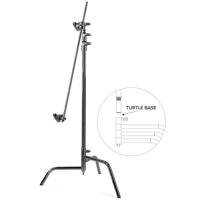
Matthews 40" Hollywood C+ Stand, Grip Head and Arm Chrome
$288.00
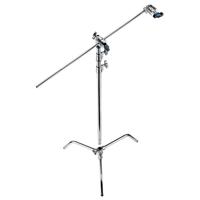
Avenger 9.8' C-Stand 30 Kit, Chrome
$299.95
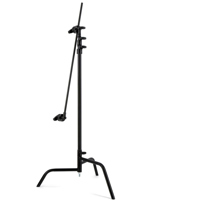
Matthews 40" C+ Stand with Turtle Base, Black
$288.00
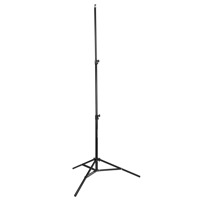
Flashpoint Light Stand (Black, 7')
$19.95
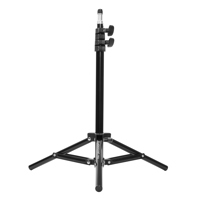
Flashpoint Backlight Stand (Black, 3.3')
$14.95
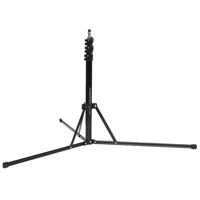
Flashpoint Reverse Legs Nano Light Stand (Black, 7')
$29.95
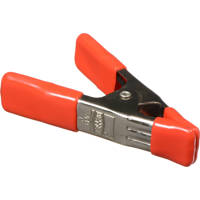
Bessey XM3 Steel Spring Clamp, 1-1/4 x 1", Orange
$2.25
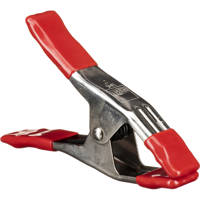
Bessey XM5 Steel Spring Clamp, 2-1/4 x 2", Orange
$3.05
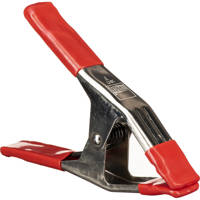
Bessey XM7 Steel Spring Clamp, 3-5/16 x 3", Orange
$5.99
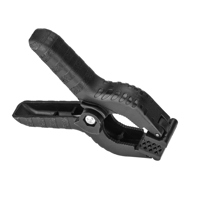
Flashpoint Spring "A" Clamp with 1" Opening & 3" Jaw Length
$1.90
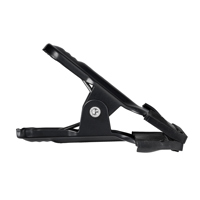
Flashpoint Clip Clamp with 2" Jaw
$2.80
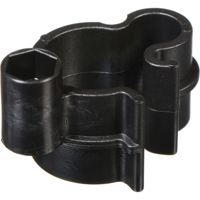
Manfrotto 22-30mm 3092 Plastic Cable Clamps, 4-Pack
$6.95
About Rosco Cinegel 17inx20in Linear Light Polarizing Filter
FEATURED REVIEWS
Excellent Product - Excellent Value
By Brad G.
Polarizing filters are expensive. After searching local shops and finding nothing, then searching the Internet and finding filters that were the wrong size and badly overpriced, I found this 17 x 20 inch sheet. At nearly [$] it seems expensive but it made the filters the size I need at a reasonable price.The filters work as advertised so my project is moving forward. Couldn't do the project without large polarized light filters. Excellent product.
Just what the doctor ordered
By Thomas B.
I wound up having to photograph some flat pencil-on-paper artwork for a client. No matter how I set up my lights, I got highlights off the darker pencil marks. Then I remembered a lighting setup from a studio manual: Polarize your lights in one axis, and use a polarizer on the camera set 90 degrees to the axis on the lights. With the lights set 45 degrees to the artwork, I got zero reflections off the pencil lines. The 17x20 Cinegel was large enough for me to cut it in two and cover both lig...
View full Review
The Rosco #7300 Polarizing Filter is used in front of lights to reduce the glare caused by smooth surfaces such as glass, water, paper and certain metallic objects. It is especially effective when used in conjunction with a polarizing filter at the lens (cross polarization). It should be placed at a distance from hot lights.
Rosco Polarizing Filler is not intended to replace a camera lens polarizer. A lens polarizer may be used separately to reduce glare, but its effectiveness is then limited to a very specific placement of the camera in relation to the glare producing surface (about 55deg. off center axis). For this reason, it is best to employ polarizing filters on both the lights and the camera. This "cross polarization" technique allows greater flexibility in the placement of the camera.
This technique is especially useful when the camera is directly facing the subject, such as when copying artwork or animation cells. Most objects produce some glare. Even though it may be minor, this glare can cause a "washing out" or weakening of the object's color. "Cross polarization" can reduce this glare to provide richer color saturation.
To "cross polarize", simply place the Rosco polarizing Filter in front of the lights so that their axes are pointed in the same direction. Each filter is clearly marked to indicate the axis of polarization.